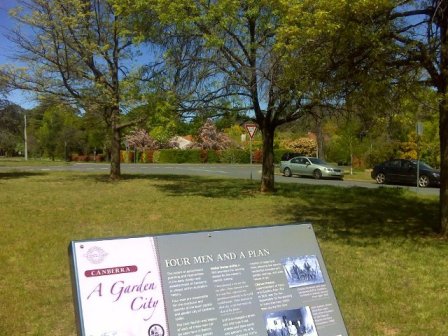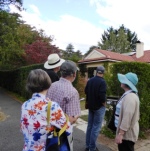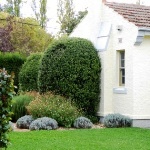Barton
The sign above can be viewed behind the Brassey Hotel in Belmore Gardens. The Kingston Barton Residents Group (KBRG) often run tours in the Heritage Festival (below left). The original street signs date from the mid-1920s. The KBRG was successful in receiving an ACT Heritage Grant in 2016 to restore them (bottom right).
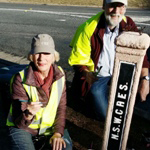
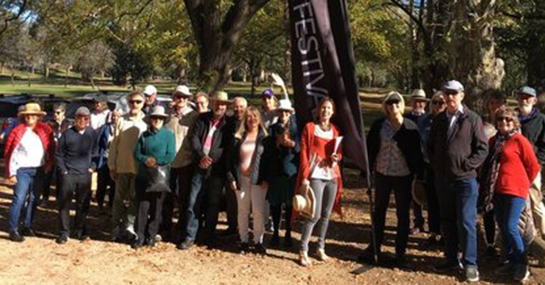
Commencing at Telopea Park a tour was conducted through Barton by KBRG in 2019 (above). Prior to the establishment of the park, it was the site of Eliza and George Henry Rottenberry's cottage (below left). Telopea Park School (below centre) was completed in 1923 and was the first major public school built for the federal capital. Hotel Kurrajong (below right) was the second hostel to be built to accommodate public servants who were transferred from Melbourne to Canberra.
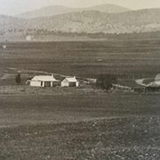
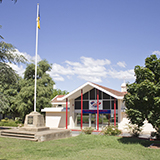

The Barton Housing Precinct comprises more than 60 houses, including Federal Capital Commission (FCC) houses built in 1926-27, private houses built between 1926-34, government houses built between 1933-39 and private houses built since 1934. The street scapes are distinctive with their varied setbacks, street trees, hedges and 1920s street signs and lamps. The FCC houses are in the Mediterranean and arts and crafts styles. All are single storey and built of brick, the majority being rendered with a rough-cast finish. Most retain their original red terracotta tile roofs.
The design for the new capital included housing areas for different socio-economic groups within the community, reflecting the social conventions of the time. The Barton area was designed for occupation by middle income public servants. It complemented the areas of Ainslie, where smaller weatherboard houses were built for public servants working in 'blue-collar' roles, and Forrest and Griffith, where larger brick homes were built for upper income public servants. Barton provides a good example of the first phase of planned housing development in Canberra, and it demonstrated the landscape planting of 1927.
Other heritage-listed sites in Barton that are outside the precinct include Telopea Park which was planted with a wide range of native and exotic trees by Charles Weston in the 1920s.
Since 1983, primary teaching at Telopea Park School has been bilingual in French and English. The bilingual program continues as an option in the secondary part of the school.
When Brassey House opened in 1927, it provided full board for 60 people in 36 single and 12 double rooms. The original building and a 1964 addition were designed in the American Colonial style, which differed from other government hostels including the nearby Hotel Kurrajong. It was designed by the Commonwealth Chief Architect, John Smith Murdoch, who designed many federal capital early buildings.
Barton was named after our first Prime Minister Sir Edmund Barton (1849-1920) who held office from 1901 until 1903. The theme of the streets is governors and the suburb was gazetted in 1928.

